Experience traditional Japanese life and be the recipient of Japanese hospitality with an overnight stay at a Ryokan. In this article, learn what to expect when staying at a Ryokan as well as how to behave to be a good guest. It’s not difficult, consideration for others is the key but there are some cultural differences that you should know as well.
Table of Contents
- What is a Ryokan?
- What to expect when staying at a Ryokan?
- Ryokan Etiquette, How to Be a Good Guest
- Takeaway
Ryokan is one of many accommodation types to stay whilst on a trip in Japan. You can read more about the other types of Japan accommodations at Where to Stay in Japan, Introducing Japan Accommodation Types: Business Hotels, Luxury Hotels, Common Lodgings, or continue reading to learn more about ryokans.
What is a Ryokan?
Writer's Pick
A Ryokan (旅館) is a Japanese inn. Ryokan are characterised by their traditional architecture and design both exterior and interior, high level of hospitality and traditional Japanese cuisine. Ryokan are also usually onsen-centred or have a public bath at the very least.
The history of ryokan dates back many centuries, as far back as the 8th century. Their popularity flourished in the Edo period when travelling became more frequent - travellers moving to and from Edo (old Tokyo). It became necessary, and a profitable business, to prepare a comfortable place to rest for weary travellers - a role that ryokans happily provided.
What to expect when staying at a Ryokan?
Traditional Japanese inns are very different from modern day hotels in Japan and around the world. Not just their appearances but the service provided. In this part, we’ll look at what you can expect from a typical Japanese ryokan.
Ryokan’s Exterior and Interior Design
Nothing screams traditional more than an ryokan in all its glory. Here’s what a typical ryokan looks like from the outside:
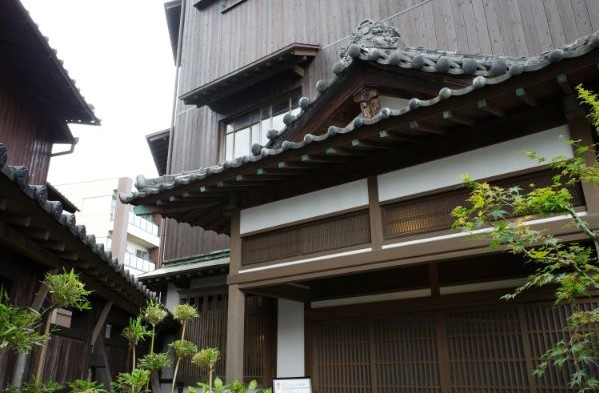
And, for your room:

A classic room will contain:
-
Tatami Flooring, essential in any traditional Japanese room like a tea room (茶室 chashitsu) for tea ceremonies.
-
Futon which is bedding for sleeping on top of the tatami flooring. High quality futons are very comfortable. Sleeping on the floor is also said to be good for your back.
-
Zabuton is a floor cushion for sitting. Sitting on tatami is already comfortable enough, but you can get even more comfy by sitting on a zabuton.
-
Low Table is paired with zabuton floor cushions. It is used for many things - relaxing, workspace, tea break and depending on the ryokan, breakfast service, dinner service, and/or tea service.
Japanese Hospitality, Omotenashi
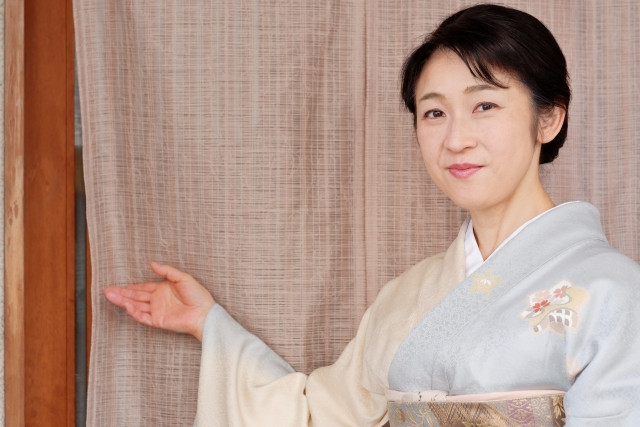
Omotenashi (おもてなし) is a term you’ll often hear in Japan especially in the service sector. Omotenashi is Japanese hospitality, it refers to the service provider or host actively working to provide good service to customers and guests with the recipient’s wants and needs in mind.
The starting point of omotenashi is to have a heart (kokoro 心) that always seeks to provide more than expected and to impress through trial and error. For that reason, reward is not expected in return for omotenashi. This is why tipping is not customary in Japan, doing so would actually be offensive and annoy the staff. If you want to express your gratitude, do so verbally or in-writing with a note or letter.
Examples of omotenashi in ryokans are:
-
Go-annai (ご案内) is a guided tour of the facility when you check-in. At most ryokans, staff will give you a tour of the ryokan and its facilities, lead you to your room, give you a tour of your room, and finally even serve you welcome tea and snacks.
-
Freshly Prepared Meals are a norm at ryokans. Ryokans typically serve traditional Japanese meals as well as adhere to the rules of Washoku - fresh nutritious ingredients, nutritionally balanced, and appreciation of the seasons and nature.
-
Preparing Futon(s) for Bedtime is also a unique part of a ryokan experience. Bigger rooms may already have your futon laid out for you, but for smaller rooms where futon is stowed away until bedtime it is quite normal to have staff prepare your bed for you after dinner service.
-
Speaking of dinner, Dinner and Breakfast at ryokans may be had in your room or at a dining hall. In your room, your table will be prepared, food brought to you, and laid out like a banquet for you to feast. Clearing up will also be handled by the staff. At the dining hall, your food should be waiting for you at the scheduled time.
-
Farewell and Gratitude is shown by staff when you check-out of the ryokan. Several staff members will walk you out of the ryokan and do a deep bow as you leave the premises. Similar to how businessmen bow to clients in front of the elevator until the doors close.
Traditional Japanese Meals
Ryokan meals are a huge part of the experience which is why most overnight stays at ryokans come included with meals and usually 2 meals of dinner and next day breakfast.
What type of meals are served at Ryokan?
Japanese traditional food, Washoku of course! is what we would like to say but the truth is with the rise of international tourist visitors, other options may also be available.
Kaiseki Ryori for Dinner
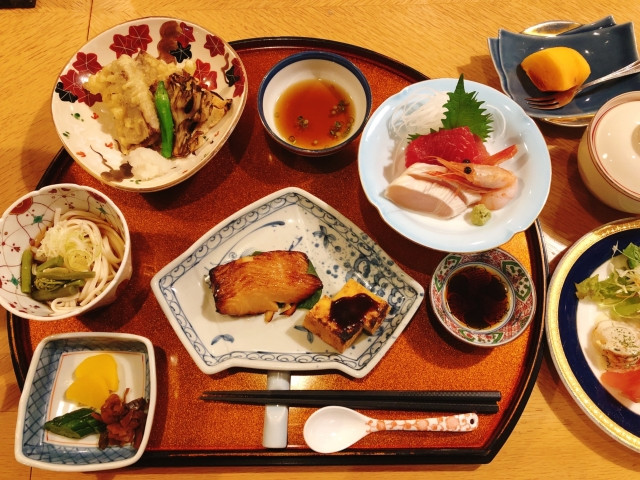
Traditional ryokans usually serve Kaiseki Ryori (会席料理), a multi-course meal for dinner. Ryokan’s pride themselves on serving only the best Kaiseki Ryori. A master chef trained in the arts of Washoku will be in charge of planning and preparing the menu which will use the best ingredients as well as embody the spirit of the season. The entire set meal will consist of appetiser, main dish, rice, soup, pickled vegetables, and dessert. Elaborate sets may contain a variety of side dishes.
Authentic Japanese Meal for Breakfast
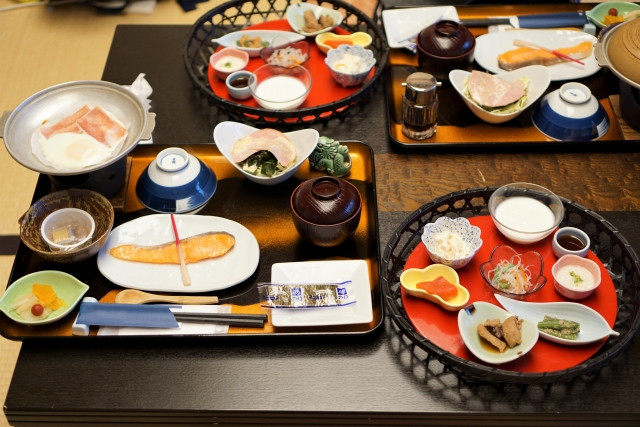
Japanese-style breakfast is served at ryokans, though with the increase of international guests some of them also offer a Western breakfast option. A Japanese-style breakfast contains a bowl of white rice, miso soup, side dishes, and hot tea. The number of side dishes depends on the ryokan and may include egg, natto, tsukemono, vegetable dishes, grilled fish, tofu etc. Traditional Japanese breakfast can be quite heavy to some people not used to a large breakfast.
Yukata at Ryokan

Yukata (浴衣) is provided when you stay at a ryokan. It may be readily available in your room, or the staff that guided you to your room will bring you one in a fitting size. Some guests change into their yukata after a bath, some change into their yukata after checking-in and head to the baths, it's entirely your personal preference. The yukata can be worn all around the Ryokan. Do note that some ryokan have restaurants that are open to outside guests, they may request you to wear proper clothing in that case. When putting on a yukata, pay attention to the proper way of wearing: left side over right side. The other way round is how corpses are dressed so don’t do that.
Slippers will also be provided, usually 2 pairs - one for wearing in your room, and one for walking around the Ryokan including to the onsens and shared baths.
Onsen or Shared Baths
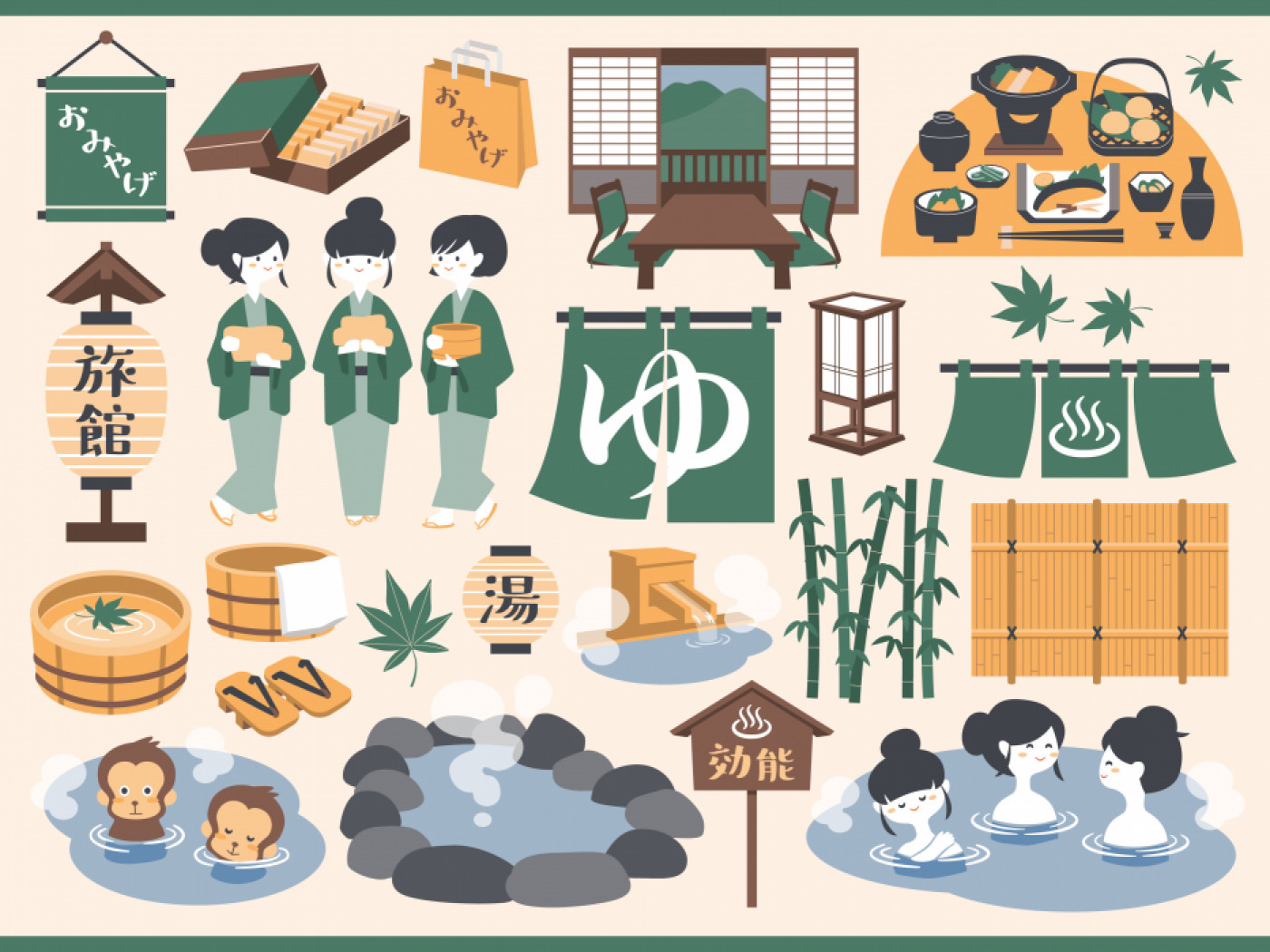
Most Ryokans are located in hot spring areas. Ryokans without onsen will instead have a shared bath that is similar to a sento (public bathhouse) but more luxurious. Ryokan onsens may be open to day trip guests who want to experience the onsen, this is called higaeri onsen (日帰り温泉). There are also ryokans whose onsens and baths are exclusive to overnight guests.
In recent times, many ryokans have rooms with private onsen baths or private baths. These are great for guests who are not used to bathing in the nude with strangers and guests with tattoos.
Ryokan Etiquette, How to Be a Good Guest
Being considerate of and courteous to other guests and ryokan staff goes a long way making your stay a peaceful and happy one. Here are some other things to keep in mind when staying at a ryokan:
Timeliness
It is not news that Japan respects timeliness above all else. This applies to ryokan as well. Aside from check-in and check-out times, dinner and breakfast time is also very, or even more, important. When you check-in to the ryokan, the staff will confirm your dinner time with you (they may re-confirm with you again after leading you to your room).
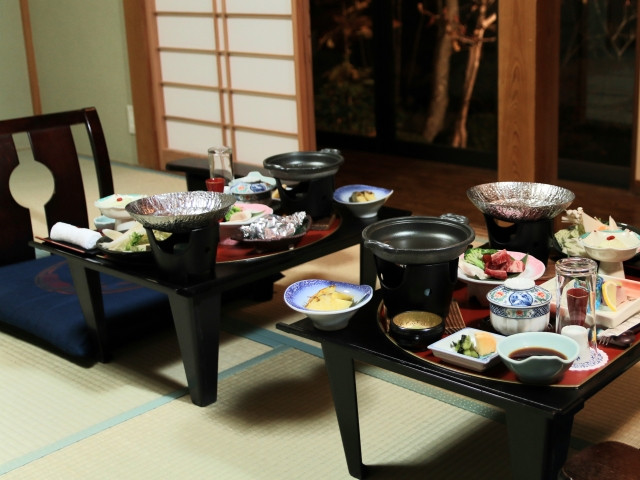
Whether you are dining in your room or in the dining hall, you are expected to arrive on time. Some ryokan have their staff come to greet you so being late will be really awkward. The same goes for breakfast. If it is served in your room, the staff will greet you with a cheery “ohayo gozaimasu” so make sure you’re not completely dishevelled for breakfast.
Plus, the food is freshly prepared so it tastes best when you start eating it. For example, hot miso soup and hot rice, sashimi or sushi at the perfect temperature, and crispy tempura. Being late means that you’ll mess up the chef’s careful coordination for your ultimate dining experience, which let’s be honest, you’re the one that loses out. If the food has truly gone cold, as part of omotenashi, the staff may even reheat it for you or worse, remake everything! Do you really want to be remembered as such an inconsiderate guest?
No Shoes on Tatami
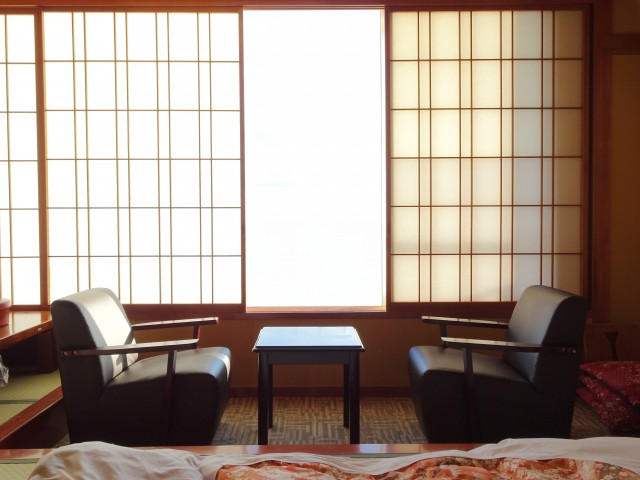
Shoes are strictly prohibited on the tatami floors. Once you enter your room, you must remove your shoes at the genkan (front entrance). Only barefoot and socks are acceptable on tatami flooring.
Also, be careful if your luggage is heavy. The weight may damage the tatami so keep it to the solid floor areas. The staff will guide you to where you can place your luggage so keep it there even when unpacking.
No Tipping
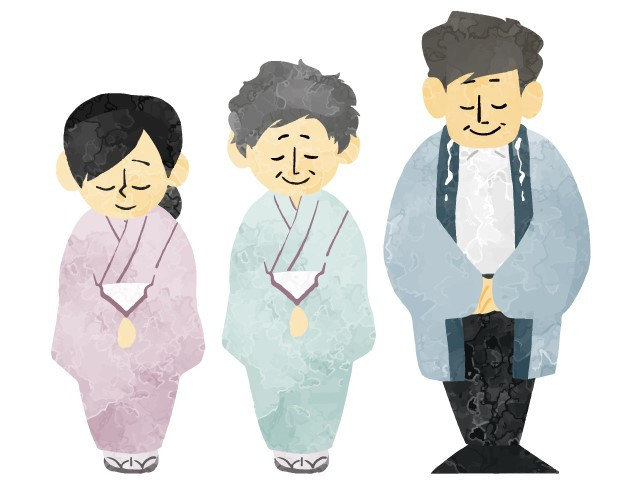
As previously mentioned, the custom of giving tips may be normal overseas but it is not a thing in Japan. Even if you give a tip, you will not be treated any differently from other guests. In fact, giving a tip at ryokans in return for omotenashi is downright frowned upon and will annoy the staff. So no tips. If you really want to, a verbal thank you or short note to express your gratitude is sufficient and appreciated.
Basic Japanese Phrases for Ryokan (and also hotel)

There are many onsen ryokans located in hot springs towns and even obscure locations. In fact, many of the best onsens in Japan like Kusatsu Onsen are not very well known to overseas tourists which is why foreign language support may be lacking. In such cases, not just for you but also for the ryokan staff, it would be good to study some useful Japanese phrases to ease your check-in and check-out process.
「チェックインお願いします。」
Chekku in onegai shimasu.
- Check-in, please.
「〇〇の名前で予約したものです。」
〇〇 no namae de yoyaku shita mono desu.
- I have a reservation under 〇〇.
「チェックアウトは何時ですか?」
Chekku auto wa nanji desu ka?
- What time is check-out?
「チェックアウトの時間を延長することができますか?」
Chekku auto no jikan wo enchou suru koto ga dekimasu ka?
- Is it possible to extend my check-out time?
「とてもいい滞在になりました。お世話になりました。」
Totemo ii taizai ni nari mashita. Osewa ni nari mashita.
- I enjoyed my stay. Thank you very much. / We enjoyed our stay. Thank you very much.
Takeaway
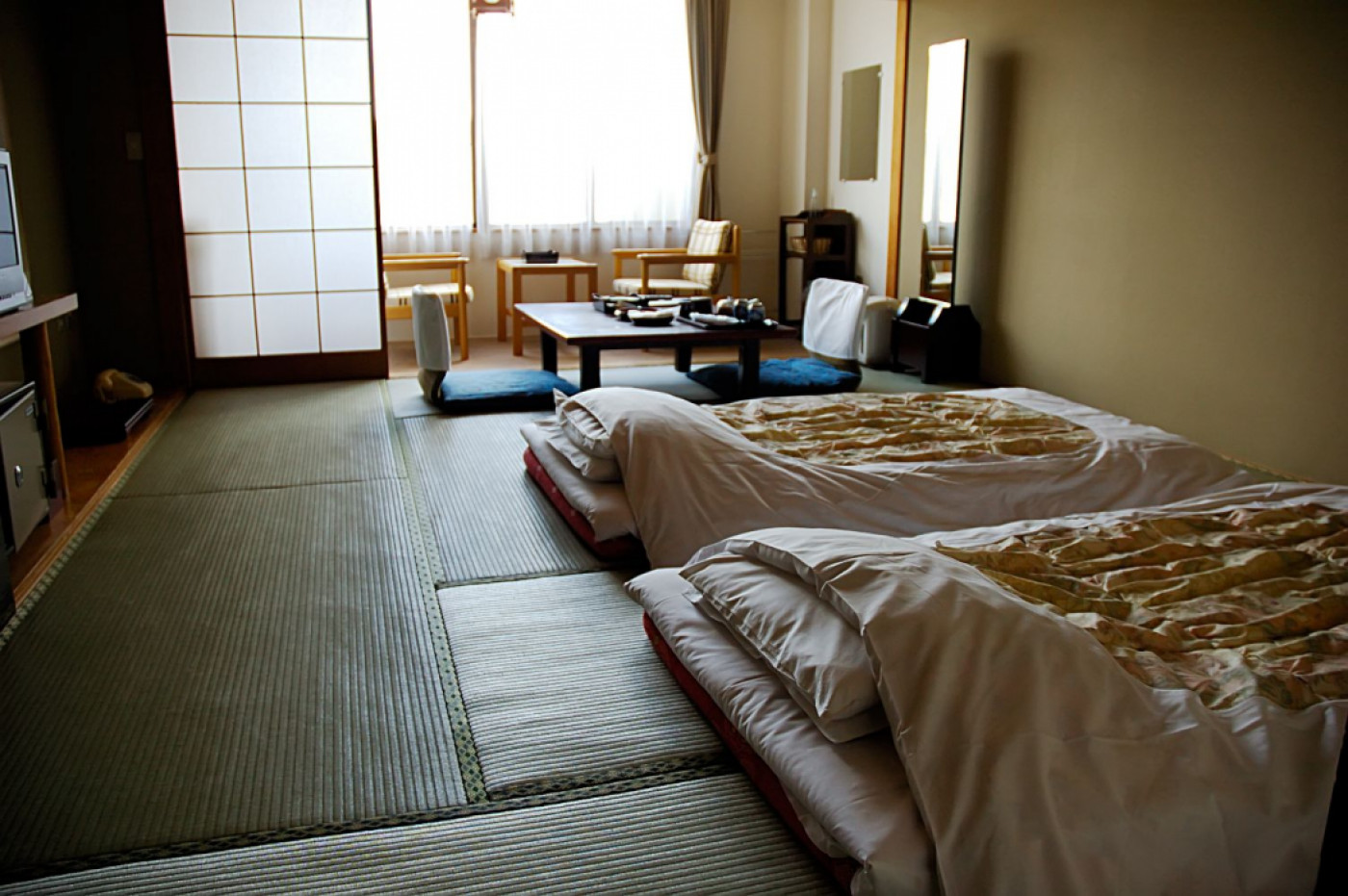
Part of what makes a trip to Japan amazing is the chance to experience its culture. A ryokan is not just a place to spend the night, it is history, culture, and tradition all wrapped up in one. Not to forget delicious food, stunning views, hot spring soaks, and admiration of the beautifully designed buildings, there’s nothing ryokans are lacking in. At least once in your lifetime, splurge on yourself and enjoy a healing retreat at a ryokan.





































